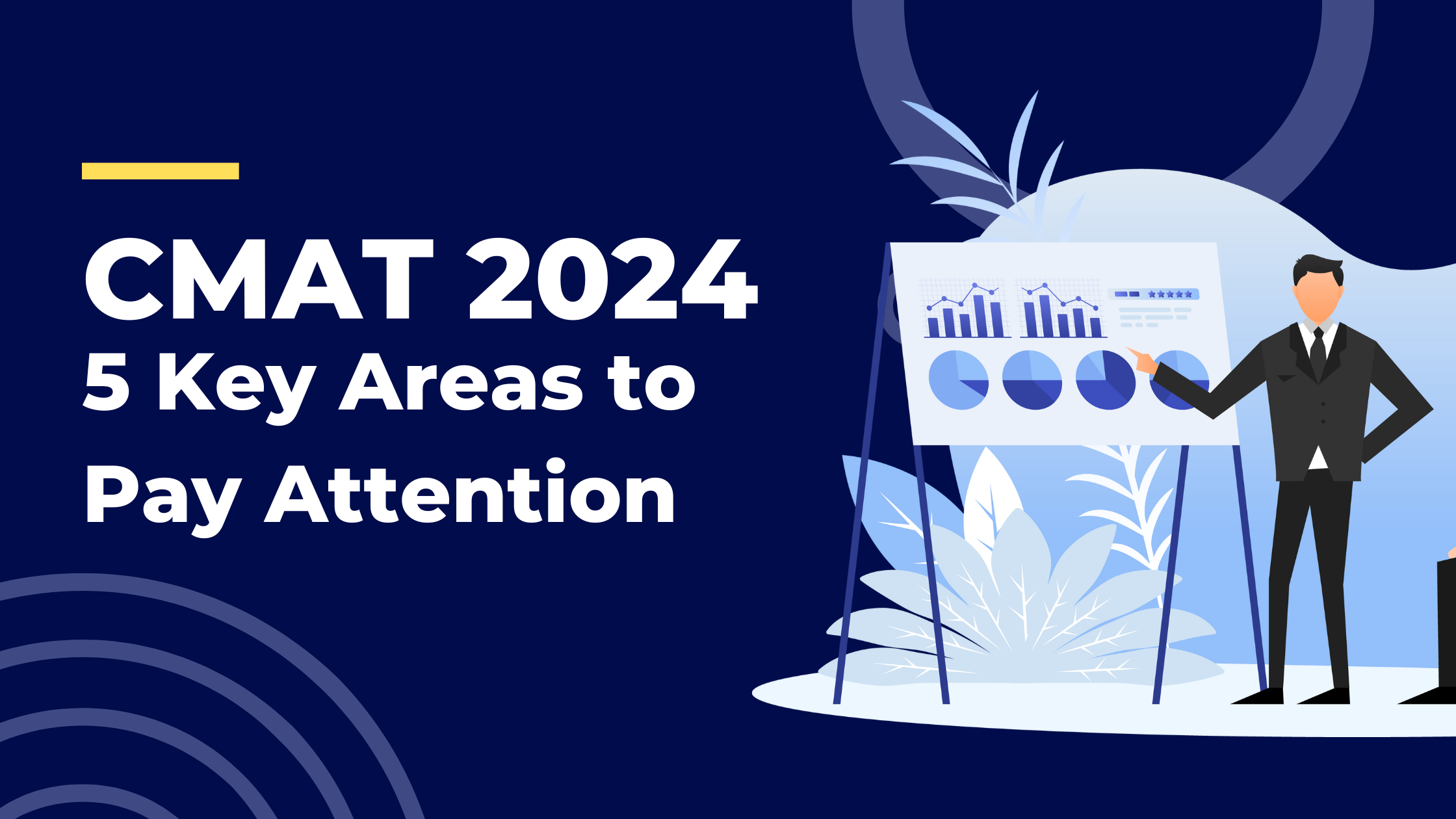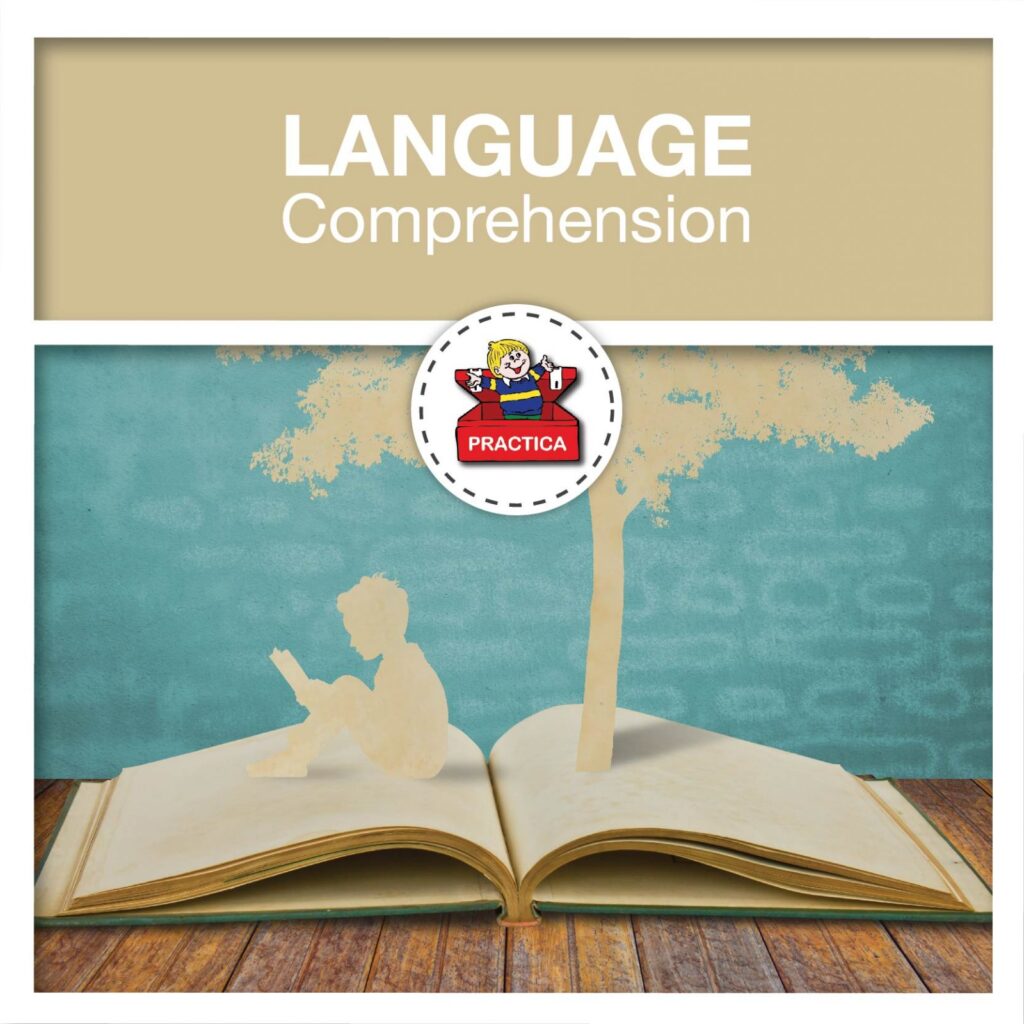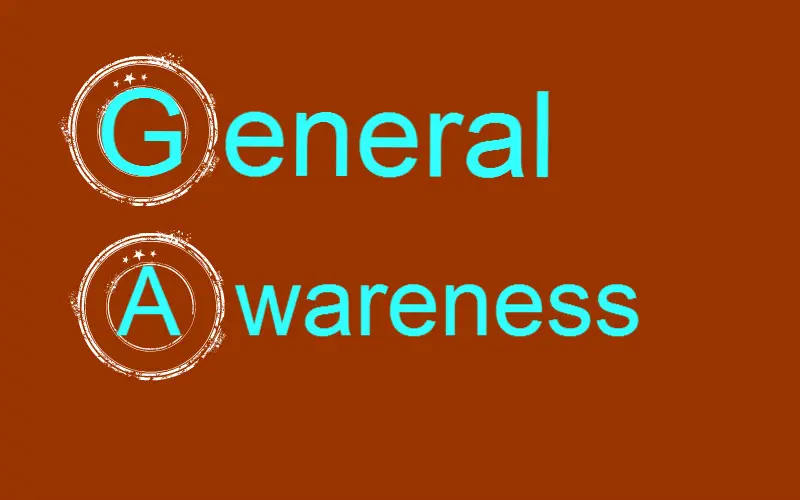Table of Contents
Here are some 5 Key Areas to Pay Attention to for CMAT 2024
The Common Management Admission Test (CMAT) is a national-level entrance exam conducted in India, serving as a gateway for students aspiring to pursue MBA and PGDM programs. This exam tests a candidate’s analytical, logical, and verbal abilities across various sections, making thorough preparation essential for success.
Given its competitive nature, paying attention to specific key areas can significantly enhance a candidate’s performance in the CMAT. This blog will explore five critical sections of the CMAT 2024 exam, providing insights and strategies to effectively prepare and excel. By focusing on these areas, candidates can improve their overall score and strengthen their chances of securing admission to top business schools.
Language Comprehension
Language comprehension in the CMAT exam evaluates your ability to understand written text and your proficiency in verbal reasoning. It includes passages for reading comprehension, along with grammar and vocabulary questions. Here’s how you can excel in this section:
Reading Comprehension
- Practice Regularly: Engage with a variety of texts, including editorials, essays, and reports, to enhance your comprehension skills.
- Focus on Speed and Retention: Work on reading faster while retaining more information, which is crucial for handling multiple lengthy passages under time constraints.
Grammar and Vocabulary
- Build a Strong Foundation: Regularly study basic grammar rules and expand your vocabulary through daily reading and using vocabulary-building apps.
- Apply in Context: Practice by doing plenty of exercises that require you to apply grammar rules in sentences, and use new words in different contexts to ensure you understand their meanings and usages.
Practice Questions
- Sample Papers and Mock Tests: Use previous years’ CMAT papers and mock tests to familiarize yourself with the question formats and to practice under timed conditions.
- Analyze Mistakes: After each practice session, review your answers to understand where you went wrong and how to improve.
Focusing on enhancing both your reading and verbal skills will help you not only in the Language Comprehension section but also in other areas of the exam and beyond, particularly in business school and your future career.
Quantitative Techniques & Data Interpretation
The Quantitative Techniques and Data Interpretation section of the CMAT exam assesses your numerical aptitude and ability to interpret data accurately. Here’s how to strengthen your preparation for this challenging segment:
Master Fundamental Concepts
- Review Basics: Ensure you have a strong grasp of basic mathematical concepts including arithmetic, algebra, geometry, and trigonometry.
- Focus on Application: Apply these concepts in solving various types of problems to enhance your practical understanding.
Develop Data Interpretation Skills
- Work with Data Sets: Regular practice with graphs, charts, and tables is crucial. Learn to quickly interpret complex data and answer related questions.
- Improve Calculation Speed: Use shortcuts and mental math techniques to improve your speed and accuracy, which are vital due to the time-limited nature of the exam.
Practice Extensively
- Use Mock Tests and Sample Questions: Solve as many practice questions and mock tests as possible to familiarize yourself with the question patterns and to improve your time management skills.
- Analyze Performance: Regularly review your test results to identify weak areas and focus your efforts on improving them.
Real-World Applications
- Engage with Real Data: Analyzing real-world data in news reports and case studies can help enhance your ability to work with different types of information, preparing you for the types of scenarios you might encounter on the test.
By focusing on these areas, you can significantly enhance your quantitative and data interpretation skills, key to scoring well in this section of the CMAT.
Logical Reasoning
Logical Reasoning is a core component of the CMAT, testing your ability to interpret and solve problems using logical analysis. Excelling in this section requires both systematic practice and strategic thinking. Here’s how to prepare:
Understand the Types of Questions
- Familiarize Yourself: Learn about the different types of logical reasoning questions, such as sequences, analogies, arrangements, assumptions, conclusions, and problem-solving.
- Identify Patterns: Practicing various question types helps in recognizing patterns and logic that are frequently tested, which can save time during the actual exam.
Develop a Problem-Solving Strategy
- Break Down Problems: Learn to quickly dissect a question into manageable parts to understand what is being asked and the steps needed to solve it.
- Use Diagrams and Charts: Employing visual aids like Venn diagrams or flowcharts can simplify complex information and assist in the logical deduction process.
Practice Regularly
- Focused Practice Sessions: Dedicate specific times to practice logical reasoning problems exclusively. This helps build a familiarity with question styles and improves speed.
- Timed Practice: Perform practice sessions under timed conditions to mimic the pressures of the actual exam.
Analyze and Adjust
- Review Your Answers: Always spend time reviewing your answers, especially those you got wrong. Understanding why an answer was incorrect is crucial for learning and avoiding similar mistakes in the future.
- Adjust Strategies: Based on review sessions, refine your approaches and strategies for solving logical reasoning questions.
Strengthening your logical reasoning skills will not only help you perform well in the CMAT but also in real-life business scenarios, where strategic decision-making is often required.
General Awareness
General Awareness is a critical component of the CMAT exam, assessing your knowledge of current events and static general knowledge relevant to the business world and beyond. Here’s how to optimize your preparation for this section:
Stay Informed
- Read Regularly: Keep up-to-date with current affairs by reading newspapers, magazines, and reliable online news portals. Focus on major events in business, finance, politics, and international affairs.
- Use Apps and Quizzes: There are many apps and websites that offer daily news updates and quizzes on current events and general knowledge. Utilize these tools to reinforce what you’ve learned.
Build a Strong Knowledge Base
- Focus on Relevant Topics: While it’s good to be broadly knowledgeable, prioritize areas frequently covered in the CMAT, such as economics, corporate affairs, major global and national news, and significant events in sports and science.
- Create Notes: Summarize what you read daily. Making notes helps in retention and serves as a quick revision tool as the exam approaches.
Practice with Mock Tests
- Test Your Knowledge: Regularly attempt GK quizzes and past CMAT GK sections to get a feel for the types of questions asked. This will also help identify any weak areas in your general knowledge.
- Analyze Trends: Pay attention to the kind of questions that appear repeatedly over the years, which can guide your study focus.
Engage in Discussions
- Discuss with Peers: Join study groups or discussion forums where you can discuss current events and general knowledge topics. This can provide new insights and help cement your understanding.
Being well-prepared in General Awareness not only helps in the CMAT but also during Group Discussions and Personal Interviews that are a part of the MBA admission process.
Innovation and Entrepreneurship
The Innovation and Entrepreneurship section is a recent addition to the CMAT, offered as an optional component. This section is designed to assess a candidate’s aptitude and knowledge in these dynamic fields. Here’s how to approach this innovative segment:
Understand the Scope
- Grasp the Basics: Start by understanding the fundamental concepts of innovation and entrepreneurship, including idea generation, business planning, startup dynamics, and scaling businesses.
- Study Successful Case Studies: Analyze case studies of successful startups and innovations to understand what factors contribute to business success and common pitfalls.
Focus on Current Trends
- Keep Updated: Stay informed about the latest trends in technology, business models, and startup ecosystems. This includes developments in digital marketing, e-commerce, fintech, and sustainable practices.
- Use Specialized Resources: There are numerous books, podcasts, and online courses focused on innovation and entrepreneurship that can provide deeper insights and learning.
Practical Application
- Think Critically: Engage in exercises that challenge you to think about practical applications of innovation. This could involve drafting business plans or developing solutions to hypothetical business problems.
- Participate in Competitions: If possible, participate in business plan competitions or hackathons. These experiences are invaluable for understanding the practical challenges of entrepreneurship.
Mock Tests and Sample Questions
- Practice with Relevant Material: Since this is a relatively new section, it might be harder to find past papers. Look for practice materials specifically designed for testing knowledge in innovation and entrepreneurship.
- Create Your Scenarios: Develop your practice questions based on current business scenarios to test your understanding and ability to apply concepts in real-world situations.
Preparing for this section not only helps in scoring well if you choose to take it but also enriches your understanding and skills that are crucial for any budding entrepreneur.
What is the best time to start preparing for the CMAT?
Ideally, begin your preparation at least six months before the exam. This timeframe allows you to cover all sections thoroughly and leaves ample time for revision and mock tests.
How many hours should I dedicate to CMAT preparation each day?
Aim for 2-3 hours of focused study each day during the initial months, gradually increasing the duration as the exam approaches to accommodate more extensive revision sessions and full-length practice tests.
Is the CMAT more difficult than other MBA entrance exams like the CAT?
The difficulty level of CMAT is generally considered to be moderate compared to the CAT. However, the CMAT tests more on knowledge and speed due to its extensive coverage of General Awareness and the inclusion of the optional Innovation and Entrepreneurship section.
Can I prepare for the CMAT without coaching?
Yes, many resources are available for self-study, including online courses, mock tests, and preparation books. Self-discipline and a well-structured study plan are crucial for successful self-preparation.
What are the best study materials for CMAT preparation?
The best materials include the official CMAT preparation guide, past year question papers, reputable mock test series, and books covering specific sections such as logical reasoning or quantitative aptitude.
How important is the General Awareness section in the CMAT, and how can I prepare for it?
The General Awareness section can be a game-changer and is essential for a good overall score. Regularly reading newspapers, following relevant current affairs blogs, and using apps for daily GK quizzes are effective preparation methods.
What should be the strategy for tackling the optional Innovation and Entrepreneurship section?
If you choose to attempt this section, focus on understanding basic concepts of business and entrepreneurship, follow current trends in startups, and practice through case studies and related exercises to develop a practical approach.
How can I improve my speed and accuracy for the Quantitative Techniques & Data Interpretation section?
Practice is key to improving both speed and accuracy. Work on your calculation skills, familiarize yourself with shortcuts and tricks, and time your practice sessions to improve speed.
What is a good score in the CMAT?
A good CMAT score generally falls around the 90th percentile or higher, which typically corresponds to a score of 300+ out of 400.
How do I manage stress and anxiety during CMAT preparation and on the exam day?
Regular breaks, balanced study routines, mindfulness exercises like meditation, and proper sleep can significantly reduce stress. On exam day, arrive early to avoid last-minute rushes and stay hydrated.





